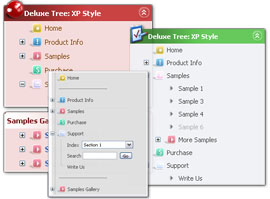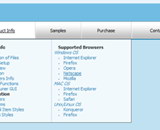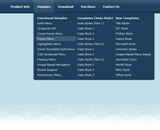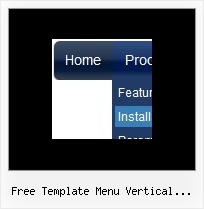Recent Questions
Q: How can I change item width in the Vista templates in the drop down menu generator?
A: The width of vista images is 92px. If the width of your menu itemis wider than 92px you should correct the width of the images in anygraph editor, for example in Photoshop.
Q: I am spending a lot more time and have figured a few things out. One more question please: How do I specify the target link I want a dhtml submenu to go to?
I see HREF specified in the code, but no where in the program to specify it.
A: See, the following parameter sets target for all items
var itemTarget="_self";
If you want to set different target for each item you should set it inthe "Item Parameters" window. Choose your item in the main window andset target in the target field.
Q: Hello, you write, that your menu is search engine friendly.
But viewing the source of your samples, I don't see anything search engine friendly in there.
A Javascript is called, that's all, which I doublt could ever be Search Engine friendy?
The only thing I have seen as search engine friendly is the menu you have added at your own homepage.
Can this be set at your menue automatically?
Can you let me know, if the menu supports this kind. Your Features and Functions don't say anything about that either.
A: Deluxe Menu is a search engine friendly menu since v1.12.
To create a search engine friendly menu you should add additional html code within your html page:
<div id="dmlinks">
<a href="http://deluxe-menu.com">menu_item_text1</a>
<a href="http://deluxe-tree.com"&glt;menu_item_text2</a>
...etc.
</div>
To generate such a code use Deluxe Tuner application.
You can find this GUI in the trial package.
Run Tuner, load your menu and click Tools/Generate SE-friendly Code (F3).
Q: Do I have the ability to change colors for the menus and the sub menus?
A: You can use different colors for each item and subitem of the menu.
You should use individual item styles.
More info you can find here:
http://deluxe-menu.com/individual-item-styles-info.html










